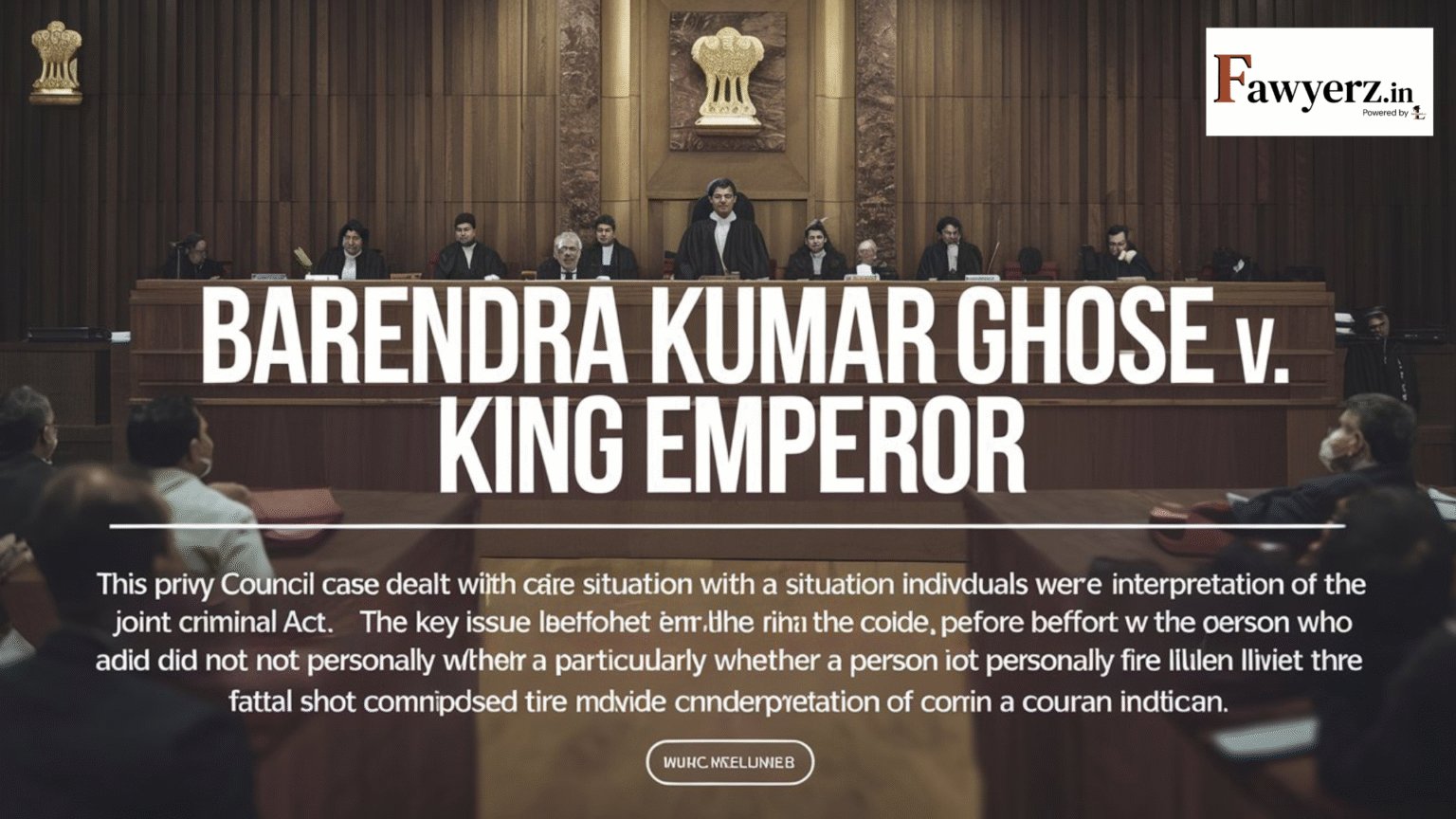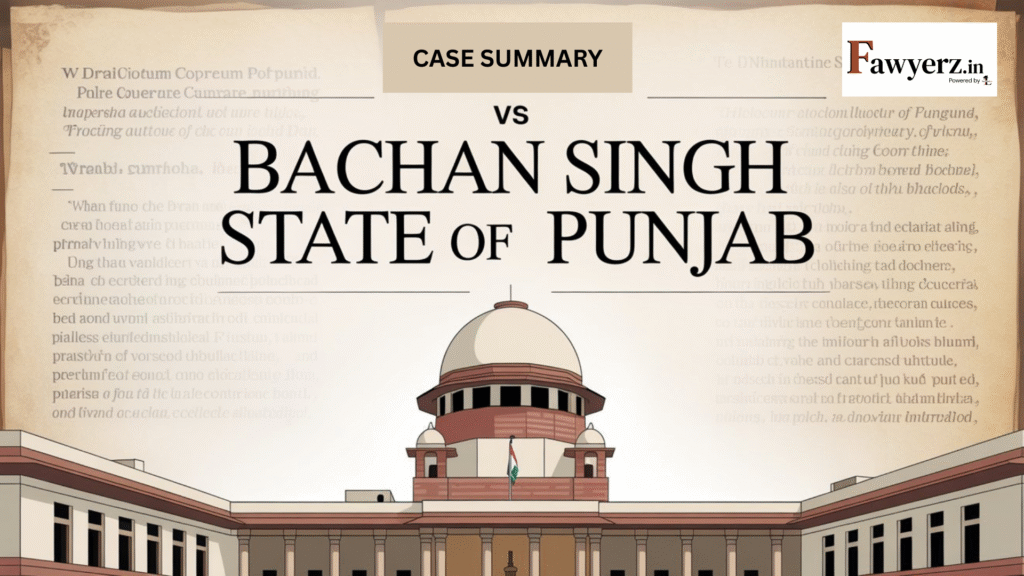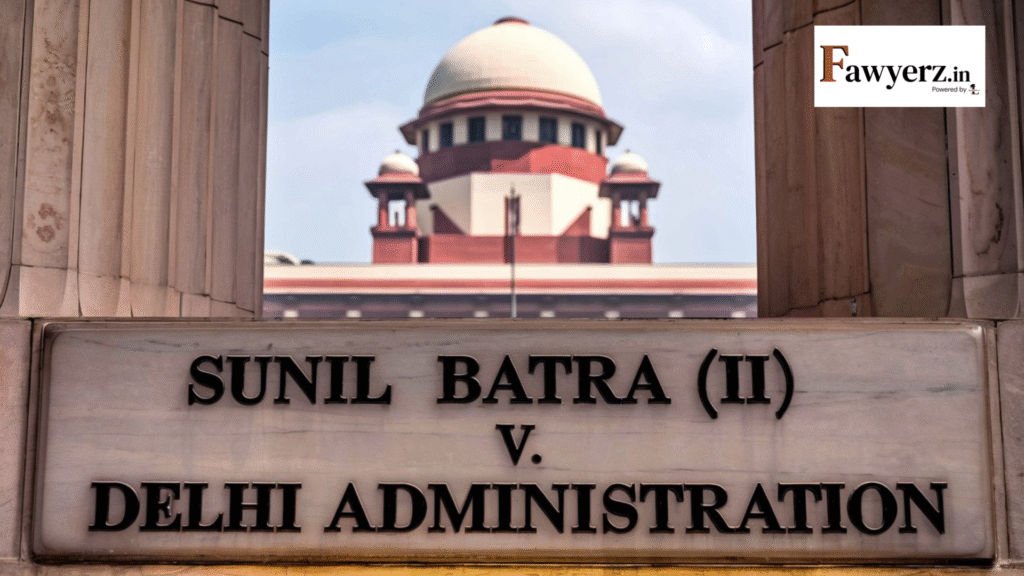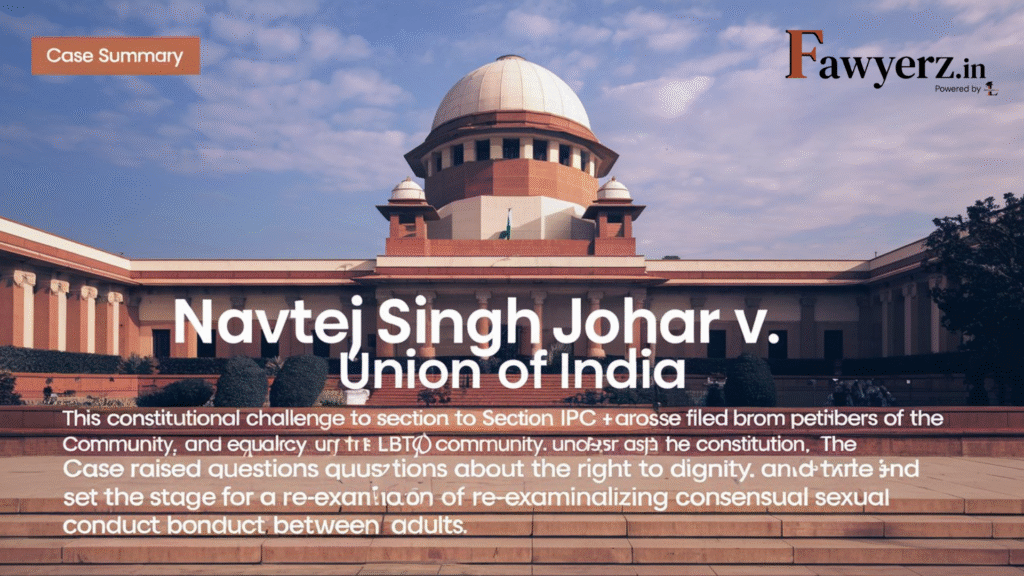Barendra Kumar Ghose v. King Emperor 1925 (Case Summary)

This Privy Council case dealt with a situation where multiple individuals were involved in a joint criminal act. The key issue before the court was the interpretation of Section 34 of the Indian Penal Code, particularly whether a person who did not personally fire the fatal shot could still be held equally liable for murder committed in furtherance of a common intention.
Table of Contents
ToggleFacts of Barendra Kumar Ghose v. King Emperor
- In August 1923, Barendra Kumar Ghose, along with three accomplices, planned to rob a post office.
- While one accomplice stood guard outside, the other three, including Ghose, entered the post office armed with firearms and demanded money from the postmaster.
- Upon resistance from the postmaster, the intruders fired their weapons, resulting in the postmaster’s death.
- As they attempted to flee, Ghose fired his pistol multiple times. He was subsequently apprehended and charged with murder under Section 302, read with Section 34 of the IPC.
Issues framed
- Whether Barendra Kumar Ghose could be held liable for murder under Section 302, read with Section 34 of the IPC, despite not firing the fatal shot?
Subordinate Court Judgment
The Trial Court convicted Ghose of murder under Section 302, read with Section 34, holding that the act was committed in furtherance of a common intention. The Calcutta High Court upheld the conviction, emphasizing that Section 34 establishes a principle of joint liability for acts done in furtherance of a shared intention.
Judgment of Barendra Kumar Ghose v. King Emperor
The Court applied Section 34 of the Indian Penal Code, 1860, which deals with acts done by several persons in furtherance of a common intention.
The Privy Council interpreted Section 34 as not creating a separate offense but as a rule of evidence establishing joint liability. It held that when a criminal act is done by several persons in furtherance of a common intention, each person is liable for the act as if it were done by him alone. The Court emphasized that the presence of a common intention is sufficient to hold all participants equally liable, regardless of their individual roles in the execution of the act.
The Privy Council dismissed Ghose’s appeal, affirming the conviction under Section 302, read with Section 34. It concluded that Ghose’s participation in the robbery, coupled with the shared intention to commit the crime, rendered him equally responsible for the murder of the postmaster, even though he did not fire the fatal shot.





